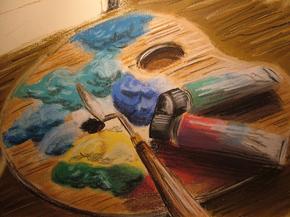House Tree Person
House Tree Person, otherwise known as HTP, is a method that many art therapists use to analyze the drawings of their clients. Essentially, children draw a house on one piece of paper, a tree on a second piece of paper and a person on another piece of paper. From the details or lack thereof used to create these drawings, art therapists can analyze their lives.
Collage Projects
Another popular method employed by art therapists is the construction of collages. Some therapists will provide a certain medium and specific themes that the youngsters must use. For example, an art therapist might ask children to use items found in nature – pine cones and leaves for example, to create a representation of their favorite playground or their backyard at home. Other therapists will provide a range of mediums and tools while asking young ones to create any picture that they wish.
Free Drawing
Here is a method in which, as the name implies, the autistic children have a lot of freedom when it comes to what they would like to draw. Basically, art therapists provide them with paper and tools for drawing, and then the children create a picture in a specified amount of time. Now, you might assume that the therapist analyzes only the actual images put on the paper. However, the therapist will also look at how color was used or how accurately the drawings represent reality. When it comes to art therapy, it’s not about a one-size-fits-all method that works for everyone.
Group Work
Building teamwork skills is an important part of art therapy, and it’s really crucial for autistic children. They tend to have problems when it comes to social development, so any opportunity to work with a group is really excellent. In group settings, they might all be contributing one piece to the drawing. Depending upon the functioning level of the children and their age, a leader might be helping them out with the process. At the end, the art therapist has accomplished his or her task by breaking down walls that the youngsters might have built up toward one another. They can see that teamwork actually has some really positive outcomes, and they need not always be fearful or anxious about working with others.


